I reported in detail last year about the planning and hardware of my homelab vSAN cluster (part 1 and part 2). For the sake of simplicity, the four small Supermicro E300-9Ds were placed on an ordinary IKEA rack.
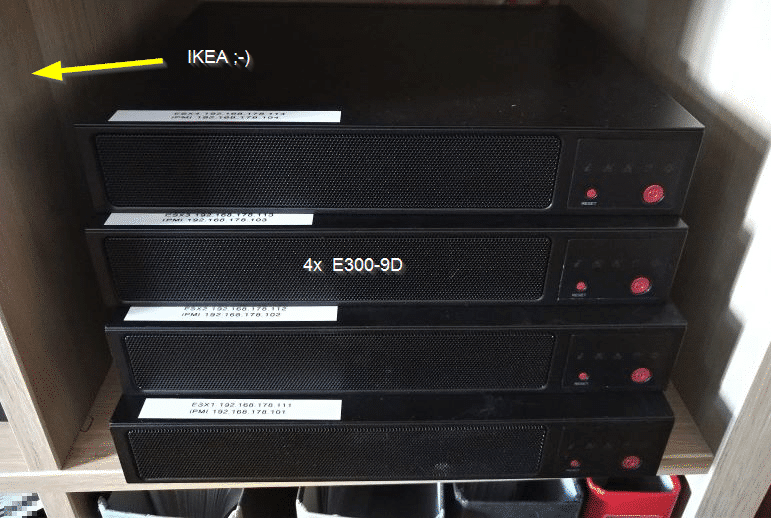
This worked quite well for some time, but changes in cabling, or hardware maintenance turned out to be difficult. Disconnecting patch cables and power cords was always a challenge. Restoring the cabling was even more difficult. It was not uncommon to end up with swapped ports after such actions.
In other words, a solution was needed. A 19″ rack would be ideal, but I don’t have room for a 48 U cabinet in my office. After some research, I found a small rack with 12 U at one of my hardware suppliers, which can also be equipped with rolls. This seemed perfect as it was just about as high as my desk. Also the depth is variable from 57,5cm to 101cm. No problem for the compact E300-9D and a few network components.
Time for Tinkering
The frame comes in a very compact pack size and turns out to be solid metal design with proper bolting.
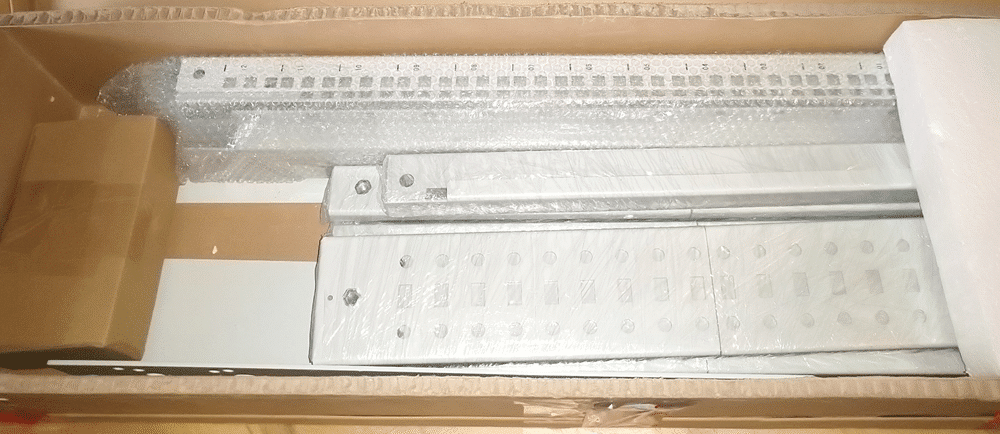
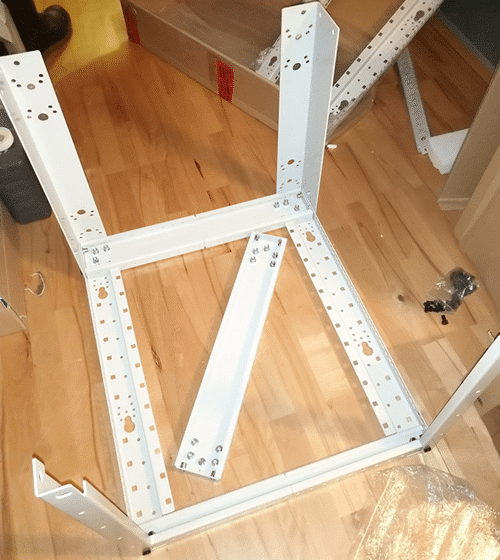
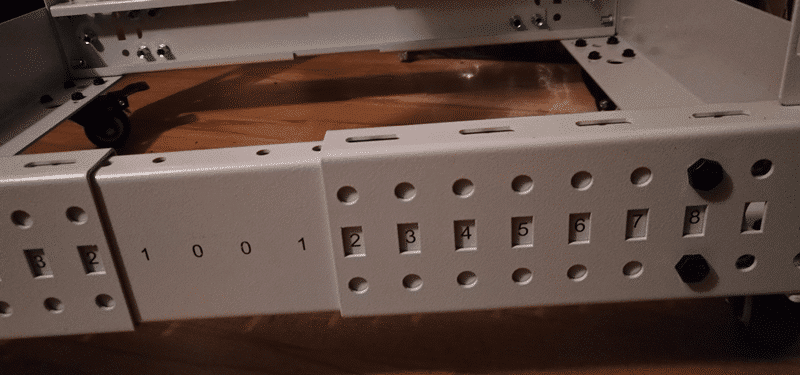
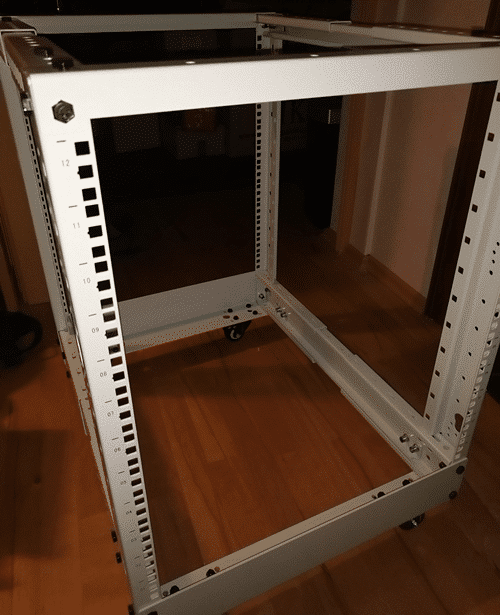
Refitting Components
Some of the existing components had to be refitted to 19 inches. For example, the Ubiquiti EdgeRouter 10X, for which a conversion kit is available from the manufacturer (SKU: ER-RMKIT). The same applies to the Supermicro E300-9D mini servers. Supermicro also offers a conversion kit (MCP-290-30002-0B), which extends the servers to 19″ width and includes a bracket for the power supply.
Preliminary expansion
In the early design phase, I didn’t think I would be able to fill all 12 height units. But step by step it became clear that further components were necessary and had to be added. For example, the power switch strip (top), which can be used to switch individual device groups. It is connected to the power distribution strips on the rear. Cable guides are also a must if you don’t want to end up in a mess. It quickly became clear that a separate switch would be needed for the 1 GBit connections if you didn’t want to waste 10 GBit ports for 1 GBit.
Although I am a big fan of the Ubiquiti UniFi system, I decided to use EdgeMax series devices for the Homelab. These can be configured individually on the CLI or the web GUI.
The E300-9D are equipped with a total of four 10 GBit adapters. Two of these are RJ45 and two are SFP+. This led to the upgrade with an Ubiquit EdgeSwitch 16 XG.
There are storage shelves on the back, which can be used for the Raspberry Pi and other accessories. A Raspberry Pi acts as DNS and NTP server in the lab.
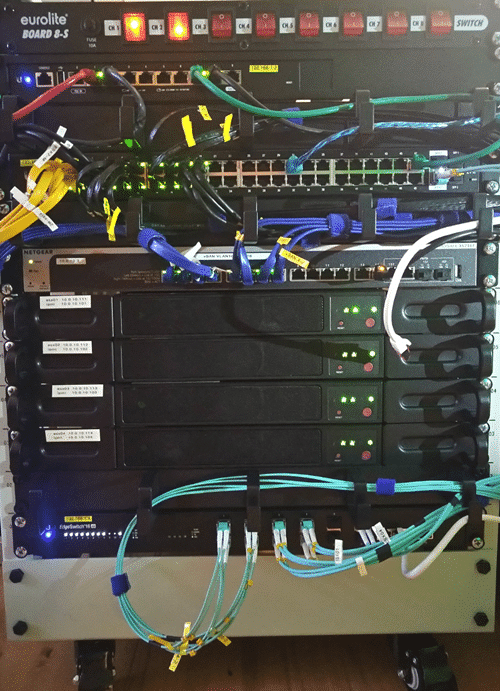
Since the whole rack is mounted on rollers, it can be easily pulled out for maintenance. Only one patch cable and one power supply has to be disconnected for this.
Noise emission
As the number of devices increases, so does the noise. I already described how to silence the Netgear 10G switch in an older article. The Ubiquiti switches work surprisingly silent and are only a bit louder during startup. At a distance of one meter, all switches reach a sound pressure of about 20 dB. This corresponds to a flying mosquito. Not too annoying, but audible. The four E300 servers currently have the highest noise level, but the original fans could be replaced with Noctua models as well. Maybe a future project…
